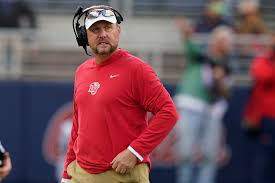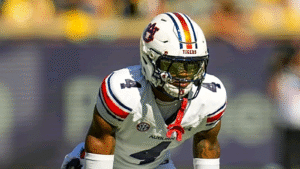
As the 2025 college football season approaches, the spotlight for the Auburn Tigers shines most brightly on transfer quarterback Jackson Arnold. With high expectations and a fanbase hungry for success, Arnold is understandably seen as the potential catalyst for Auburn’s resurgence. But while the quarterback position often receives the lion’s share of attention and credit, football remains the quintessential team sport—one where success hinges on all three phases of the game operating in unison. This reality brings us to an often-overlooked segment of Auburn’s roster: the secondary.

Though their impact may not generate highlight reels or social media buzz at the same rate as a game-winning touchdown pass, the cornerbacks and safeties are quietly poised to have a significant influence on Auburn’s trajectory this season. The fate of the Tigers may rest as much in the hands of the defensive backs as in Arnold’s. Two men in particular bear the responsibility of ensuring that this vital unit reaches its full potential: cornerbacks coach Wesley McGriff and safeties coach T.J. Rushing.
A Look Back: 2024 Performance and Defensive Gaps
Auburn’s secondary wasn’t a glaring weakness in 2024, but neither was it a standout strength. The Tigers allowed an average of 213 passing yards per game, placing them in the middle tier of the Southeastern Conference (SEC) in that category. This level of performance was sufficient to keep many games within reach, but it lacked the spark of big-play potential that can turn a good defense into a great one. Most tellingly, Auburn managed to intercept just eight passes throughout the season—a number that tied them for 97th nationally.
In a conference that boasts dynamic, pro-caliber wide receivers and increasingly complex offensive schemes, creating turnovers through interceptions is more important than ever. Auburn’s inability to generate those game-changing plays hampered the defense’s overall effectiveness. This deficiency was compounded by an offense that frequently turned the ball over, placing the defense in difficult situations and leaving them little margin for error.
Coaching Changes and a New Vision
The offseason departure of defensive assistant Charles Kelly—who accepted the head coaching position at Jacksonville State—left a notable void in Auburn’s coaching staff. Rather than looking outside the program, head coach Hugh Freeze chose to promote from within, a move that reflects both continuity and trust in the existing staff. T.J. Rushing, previously an assistant on the defensive staff and a former NFL defensive back with a Super Bowl ring from his time with the Indianapolis Colts, was elevated to the safeties coach role.
Rushing brings credibility, energy, and a deep understanding of what winning looks like. Upon his promotion, he expressed genuine excitement about Auburn’s direction and the opportunity to contribute to a potentially elite defense.
“I witnessed firsthand this past season how special Auburn is and what we are building here,” Rushing stated in an official release. “I’m very familiar with Coach [D.J.] Durkin’s defense, previously working with him at another school, and know our defensive personnel here very well. I look forward to helping us build a championship-level defense and team.”
Rushing’s familiarity with Defensive Coordinator D.J. Durkin’s scheme—honed during their time together at Texas A&M—gives him a distinct advantage. Their past collaboration could provide Auburn with the schematic continuity needed to take a step forward defensively. With Rushing now in a more prominent role, expect a more aggressive approach in the secondary. Last season’s paltry interception total is unlikely to be tolerated as the new norm.
Wesley McGriff and the Corners: Physicality Meets Precision
On the other side of the secondary, veteran coach Wesley McGriff leads the cornerbacks unit. McGriff is no stranger to the SEC grind and has cultivated a reputation for developing tough, physical players who bring both grit and technique to the field. One of his standout pupils is Kayin Lee—a player who exemplifies the type of cornerback McGriff values. Though Lee’s primary strength is coverage, he’s not shy about coming downhill to deliver a hit. This physicality is not a new trait for Auburn cornerbacks, but McGriff has leaned into it, using it as a foundational identity for his room.
However, toughness and fundamentals must be paired with production. Auburn’s corners, much like their safeties, need to become playmakers. Generating turnovers is not simply about instinct or luck—it’s about preparation, film study, and taking calculated risks. This is where coaching becomes paramount, and McGriff’s challenge in 2025 will be to turn his physical defenders into opportunistic ballhawks.
SEC Competition and the Margin for Error
Auburn’s secondary will face a gauntlet of elite wide receivers this season, as is customary in the SEC. Every week presents a new test, with offenses that are capable of exploiting the smallest of weaknesses. The margin for error is razor-thin. That’s where the support of a strong front seven becomes crucial—and fortunately for Auburn, they boast one of the best in the conference.
Leading that group is Keldric Faulk, a defensive end projected to be a top-10 NFL Draft pick. Faulk’s presence should alleviate some pressure from the secondary by forcing quicker throws and creating more hurried decisions from opposing quarterbacks. An effective pass rush is a defensive back’s best friend, and if Auburn’s front can consistently collapse pockets, it may lead to more tipped balls, errant passes, and, ideally, interceptions.
A Path Forward: What Needs to Happen
For Auburn’s secondary to evolve from average to elite, several things need to align:
- Enhanced Ball Skills: The corners and safeties must improve their ability to locate and secure the ball. This includes working on hands, route recognition, and timing.
- Communication and Cohesion: In the back end, one miscommunication can lead to a touchdown. Rushing and McGriff must foster a sense of unity and discipline among their units.
- Situational Intelligence: Knowing when to take risks and when to play it safe is critical. This football IQ is developed over time but can be accelerated through good coaching and in-game reps.
- Rotation and Depth: Depth in the secondary will also be vital, especially in a long SEC season. Injuries are inevitable, so developing the second and third-string defensive backs now could pay dividends later.
- Synergy with the Front Seven: As mentioned, a complementary relationship between the secondary and the defensive line could lead to a sharp uptick in turnovers. If Faulk and the pass rush are disruptive, the DBs must capitalize.
Leadership and Accountability
Both McGriff and Rushing are respected voices on the coaching staff, but leadership must also come from within the locker room. Veterans in the secondary must embrace the challenge, hold each other accountable, and set the tone for preparation and performance. A defense that believes in itself, communicates well, and plays with aggression can be the backbone of a successful team.
Final Thoughts: A Unit on the Brink
In many ways, Auburn’s 2025 football season may be shaped not just by what Jackson Arnold does with the football, but by how well the secondary performs without it. A timely interception, a forced fumble, a key fourth-down pass breakup—these are the plays that define games, and by extension, seasons. McGriff and Rushing are the architects tasked with building a secondary capable of making those plays. They have the tools, the experience, and the support of a formidable front line.
If the corners and safeties can make the leap from competent to impactful, Auburn has a chance to surprise people this season. The path to contention runs through balance—and if the secondary steps up, they could be the difference between another middling finish and a serious run at an SEC title.
Leave a Reply